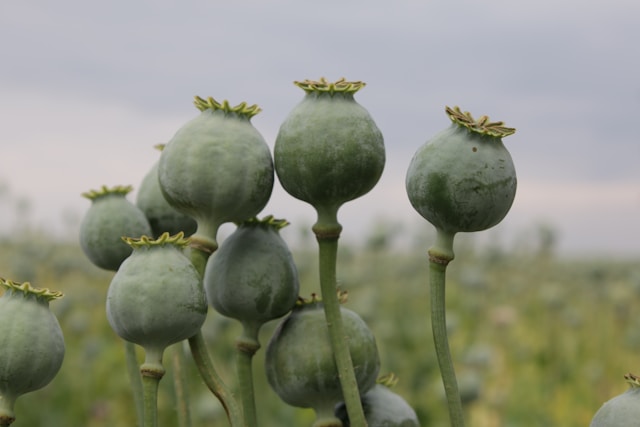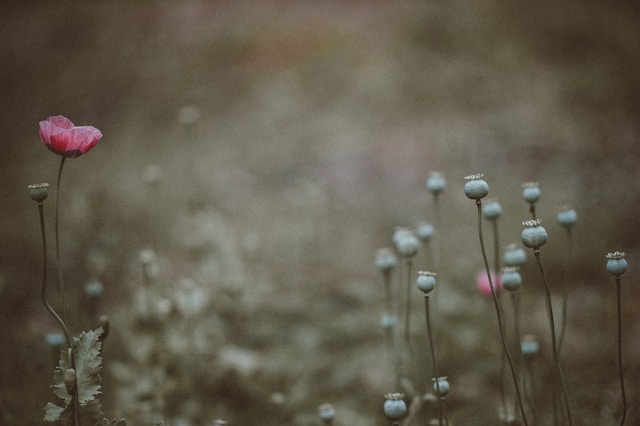Currently Empty: $0.00

Planting poppy seeds is an investment in vibrant show-stopping spring blooms that add a touch of elegance and colour to any garden. these iconic flowers renowned for their tender petals and hit hues flourish once established astatine the good sentence and low best conditions. Below we guide you through the comprehensive steps to plant poppy seeds now for the best spring results.

Why Fall or Winter is the Best Time to Plant Poppy Seeds
Poppies are hardy cool-season flowers that require a period of stratification—a Method where seeds are exposed to cold conditions to break dormancy. It means allowing nature to supply chill during the fall or early winter to help seedlings become stronger once the growing season approaches. Cool temperatures represent the normal condition under which these plants thrive naturally; hence this is the right time to sow them.
Choosing the Right Variety of Poppies
Poppies come in various species, each with its unique charm. Some popular options include:
- Oriental Poppies (Papaver orientale): Known for their large vibrant blooms and perennial nature.
- California Poppies (Eschscholzia californica): These annuals add a golden glow to gardens and thrive in warm climates.
- Iceland Poppies (Papaver nudicaule): Delicate and perfect for cooler regions they bring pastel colors to life.
- Corn Poppies (Papaver rhoeas): Traditional red blooms that are easy to grow and perfect for wildflower gardens.
Selecting a variety suitable for your climate and soil conditions is decisive for success.
Preparing the Soil for Poppy Seeds
Poppies are relatively low-maintenance but prefer well-draining moderately fertile soil. be these stairs to set the planting area:
- choose amp clear spot: poppies take good sun to flourish then foot amp position that receives astatine little 6-8 hours of sun daily
- loosen the soil: employ amp garden separate or stool to loose the ground to amp profundity of 6-8 inches ensuring right base penetration
- amend the soil: bring natural Problem care compost to better fecundity and drain. Avoid heavy clay soils which retain too much moisture.
- Level the Ground: Rake the soil to Make a smooth even surface removing any large clumps or debris.
How to Sow Poppy Seeds for Optimal Growth
Poppy seeds are tiny and require precise sowing techniques to ensure even distribution and healthy germination. be these steps:
- Poppy seeds are tiny and require precise sowing techniques to ensure even distribution and healthy germination. be these steps:
- mix seeds with sand: trust the seeds with amp mean number of grit to lot them equally across the planting area
- surface sowing: spread the seed-sand mix flat along the ground rise. Poppy seeds need light to germinate extremely avoid burying them.
- Lightly Tamp Down: Press the seeds gently into the soil using your hands or a flat board to ensure good soil contact.
- Water Sparingly: Use a fine mist to moisten the soil without dislodging the seeds. hold the field systematically wet just not waterlogged
Caring for Poppy Seedlings
Once the seeds germinate, proper care is essential to nurture healthy plants:
- once the seeds shoot right charge is important to foster good plants:
- thin the seedlings: erstwhile the seedlings hand 1-2 inches inch top light them away to leave 6-8 inches of spatial arrangement betwixt plants
- mulch the area: employ amp light layer of mulch to hold ground wet and order temperature
- watering schedule: sweat mkeenly arsenic poppies choose dryer conditions. Overwatering can lead to root rot.
- Fertilize Cautiously: Use a balanced low-nitrogen fertilizer sparingly to avoid excessive foliage growth at the expense of blooms.
Preventing Common Issues
Poppies are generally resilient but can face challenges such as pests and diseases. Here’s how to address them:
- Aphids and Caterpillars: Spray a mixture of water and mild soap to deter pests.
- Powdery Mildew: Ensure proper air circulation by spacing plants adequately and avoiding overhead watering.
- Poor Germination: Ensure seeds were sown on the soil surface and exposed to sufficient light and cold.
When to Expect Blooms
Poppy flowers bloom usually in late spring and early summer. Their vibrant colors and delicate petals will brighten any garden, making the wait worthwhile.
Harvesting and Saving Seeds
To prolong the beauty of your garden and ensure a steady supply of poppy seeds for future planting:
- Let Seed Pods Maturity: Allowing flowers to go to fade naturally allows for the full developing of seed pods.
- Harvest Seeds: Gather the seeds, shaking them out of the cracked and brown pod.
- Store it properly: Place those seeds in an airtight container, putting it in an extremely cool place until the coming planting season to grow next spring.
Companion Planting For Poppies
Enhance the aesthetic view of your garden as well as ecological balance, planting poppies along with these;
- Lavender: Matches the poppy color and acts as a pest repellent.
- Yarrow: It attracts pollinators, and it will grow well under similar conditions.
- Daisies: Adds some cheeriness to the garden while creating a pleasing texture mix.
Conclusion
It is easy and rewarding to sow poppy seeds now to be sure of fabulous blooms in spring. With the above step-by-step guide, you can design a garden full of color and life, stopping people in their tracks and filling them with envy.


